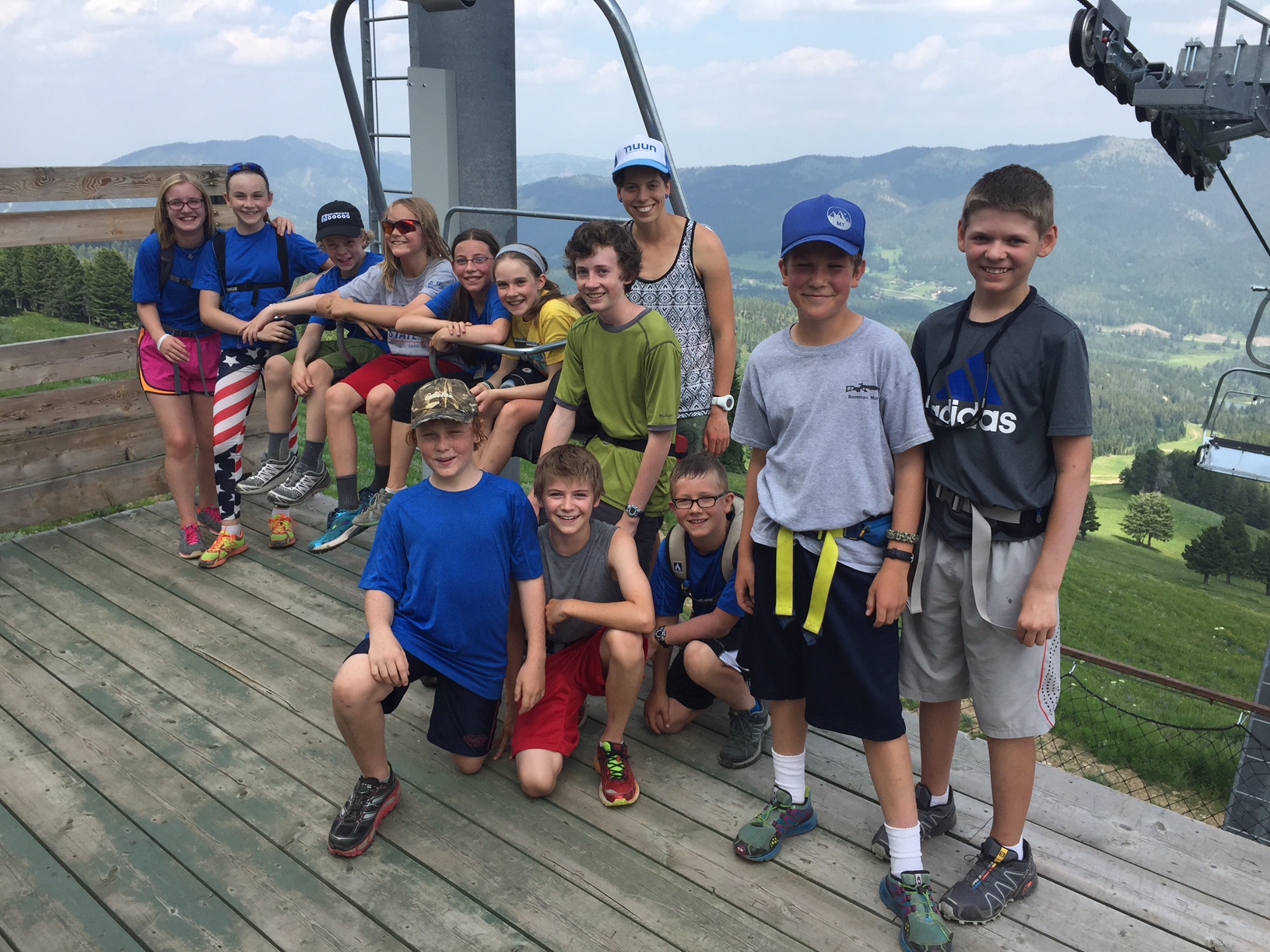
Corrine Malcolm has one word to describe the Bridger Biathlon Club: momentum.
“It has gained a lot of momentum,” she said of the fledgling program based in Bozeman, Montana. “It’s a really big ball of energy and momentum. It’s pretty cool to be part of.”
Malcolm, a former national team biathlete who just finished her bachelors degree at Montana State, was hired as the club’s first paid coach this summer. That represented another big step for a program which began less than three years ago.
“It started when two boys came home from school when they were eight years old and told their parents they wanted to be biathletes,” Malcolm explained. “I think the parents were like, okay, what is that? But it was great. These two dads said, all right, let’s ask some questions and figure this out and start something.”
The two boys are now 11 and have recruited a lot of friends into biathlon; the two dads, Eric Love and Jim Sites, are the club’s directors.
The Bridger Biathlon Club boasts 32 kids enrolled in Malcolm’s summer program this year. She runs three practices a week, some based at a gym and others on the shooting range.
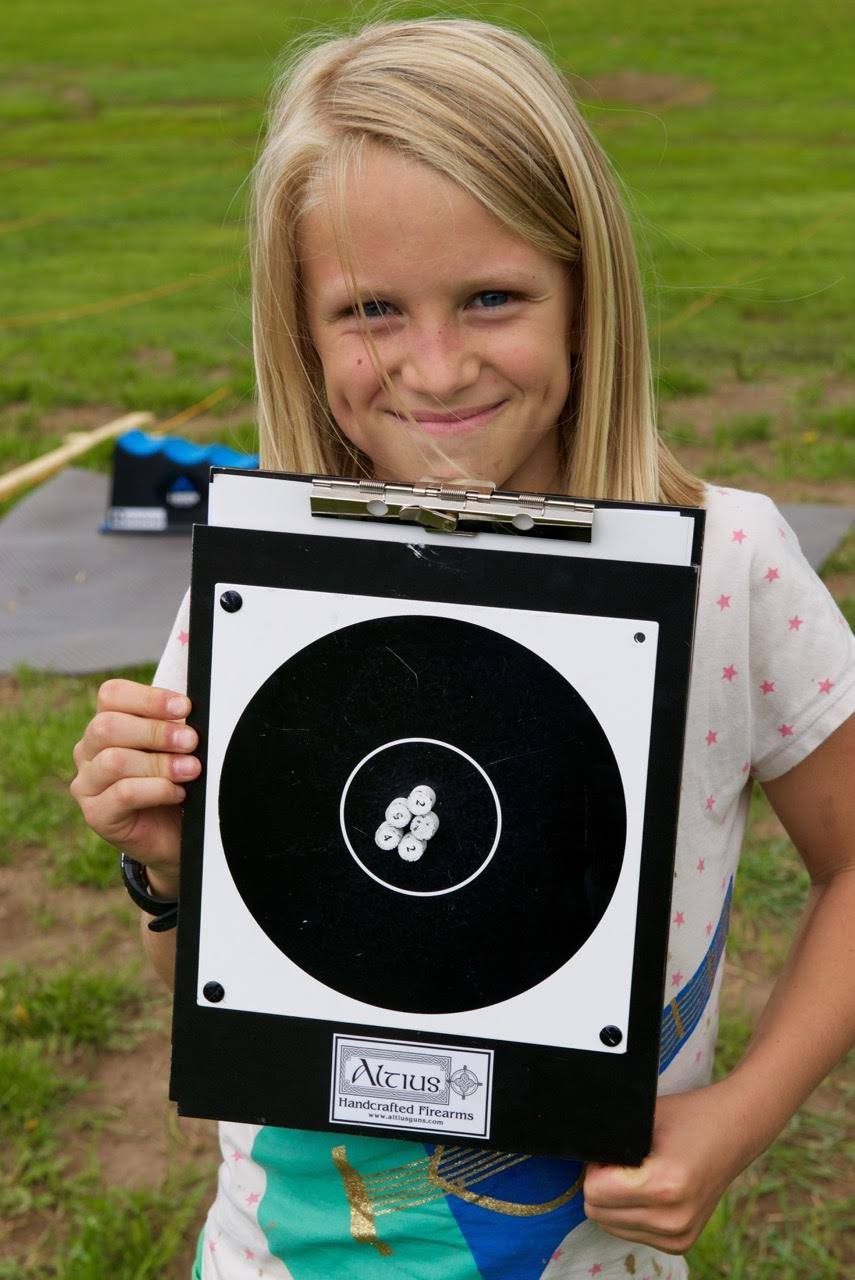
The athletes have a variety of different backgrounds, from some who are more interested in simply biking farther than they’ve ever gone or hiking a seemingly unattainable peak, to others who are keen to race in biathlon. Malcolm’s goal is to motivate them all.
“It’s definitely a program that’s designed to be inclusive and welcoming and not to weed out all the kids that aren’t competitive,” she said. “Although the program is inclusive, ultimately we want to prepare the kids who want to race, to be ready to race. Kids that might not want to race right now, we want to make sure that if that changes they are comfortable in that situation.”
Already she has seen success and growth from some of her young charges. Two weeks ago Bozeman hosted the Big Sky State Games, and most of the kids participated in not one but two biathlon races.
“It’s been cool in the last six weeks to have kids who in other programs would probably be considered unathletic or uncoordinated or uncompetitive, who would be weeded out because they don’t want the competitive pressure,” she said. “We had a summer biathlon race and almost all of them raced. It was so cool to watch them grow and really go for it… The kids did a running biathlon race in the morning and a mountain bike biathlon race in the afternoon, and just didn’t want to stop. It was pretty sweet.”
With some as young as nine years old and others in the J2 category for skiing, there’s a variety of skill levels in the group. One of the oldest athletes, Ariana Woods, went to U.S. National Championships in Truckee, California, in March, and won a silver medal in the girls’ sprint.
That can make it challenging to match ability levels. Malcolm tries to put groups together as best she can at practice and relies on the club’s still-strong volunteer crew to make it work.
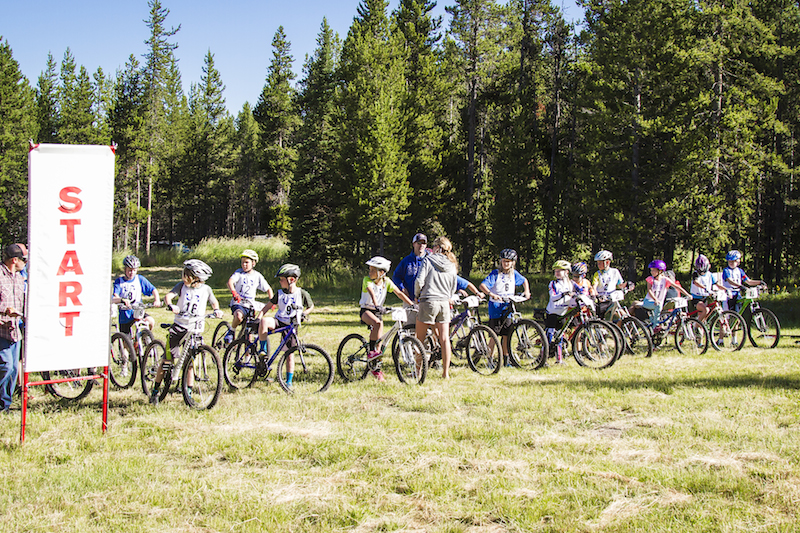
“I have parent volunteers helping, board members who are former biathletes, and also a former high-level competition shooter helping,” she said. “We do a really good job of herding 20 kids with rifles. It’s good to limit the number of kids on the range at one time, maybe only six to eight kids. The others run or bike and we rotate them through.”
Looking Ahead
Malcolm will start an accelerated PhD program at Simon Fraser University in Vancouver, British Columbia, in 2016, studying biomedical physiology and kinesiology. Until then, she’s on board as the club’s coach and plans to run fall and winter training programs that are more robust than the Sunday practices the club offered the previous year.
What shape those programs will take is still up in the air. As an athlete who came from a running and cross-country skiing background herself before starting biathlon, Malcolm doesn’t want to demand one-sport fidelity from athletes. And having competed in biathlon at a high level, she knows that it’s also crucial to be a strong cross-country skier.
“By no means is biathlon big enough for junior athletes to only be racing biathlon,” Malcolm said. “And if those kids want to be competitive, they need to be great nordic skiers too.”
Ariana Woods is one of the first athletes who has had to navigate this question of how to train for both skiing and biathlon, simply because she’s the oldest. She has been part of the Bridger Ski Foundation’s large and successful junior program, and Malcolm sees no reason for that to change.
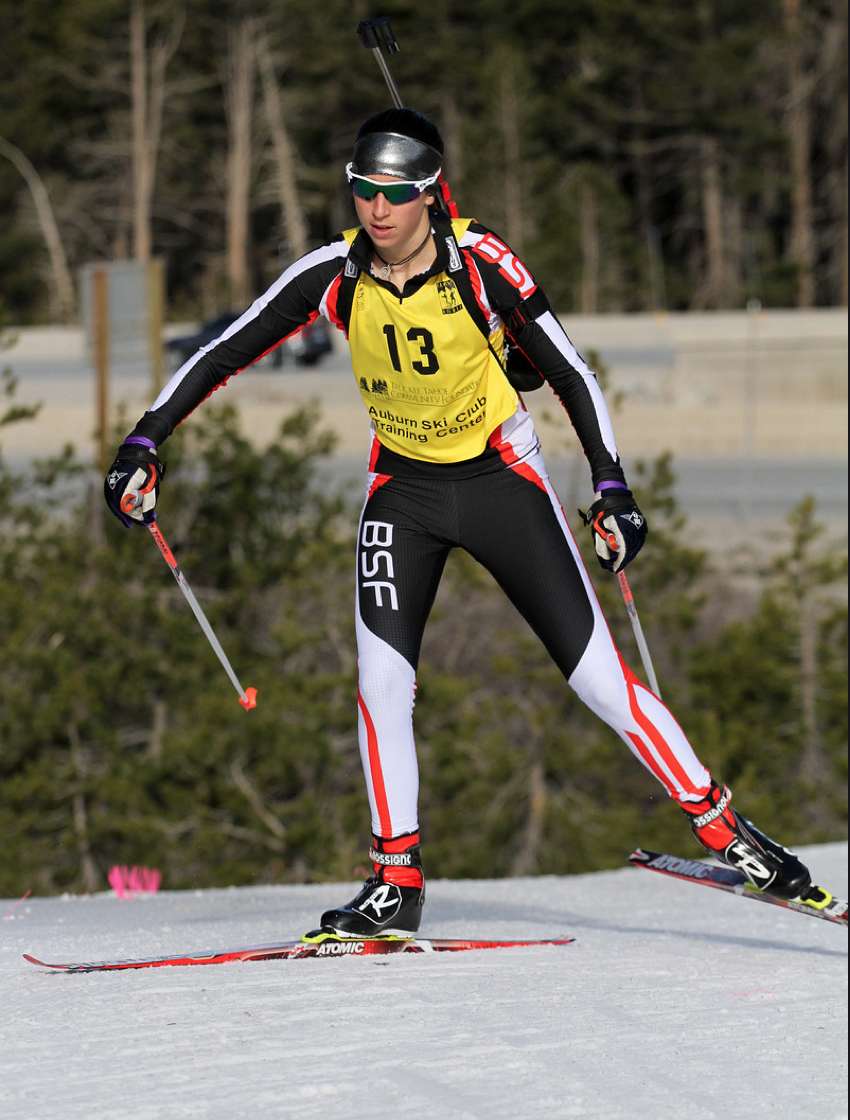
Woods plans to go to World Youth and Junior Championship Trials in December to try to represent the U.S. abroad, and to do so she’ll need to ski fast. So Malcolm hopes that the biathlon offerings can complement Bridger Ski Foundation’s program, and that the two clubs can share some athletes who have diverse athletic interests.
“My vision is that it’s part of the mountain culture and the ski community here, which does mean that it’s a joint effort,” Malcolm said. “Bozeman doesn’t need two ski teams… I have no intention to steal or poach children. It should be about the kids, and everyone should do what’s best for the kids and the ski community. So we need to come together in the ski community.”
Progress So Far
An expanded winter program will be the next step in what is looking like a very fast evolution of the Bridger Biathlon Club. Last winter, the club ran an all-volunteer program, mostly on Sundays at Bohart Ranch. The previous autumn, they offered a gun safety certification program that is part of the U.S. Biathlon Association’s curriculum, again staffed by volunteers, this time including some former high-level competition shooters.
There have been infrastructure changes, too. Last year the club installed new targets that made biathlon training truly viable at Bohart Ranch for the first time in nearly a decade. And the club has now launched a $10 million fundraising campaign to buy Bohart Ranch and the adjacent Crosscut Ranch and merge them into one nordic center for the Bozeman community to use.
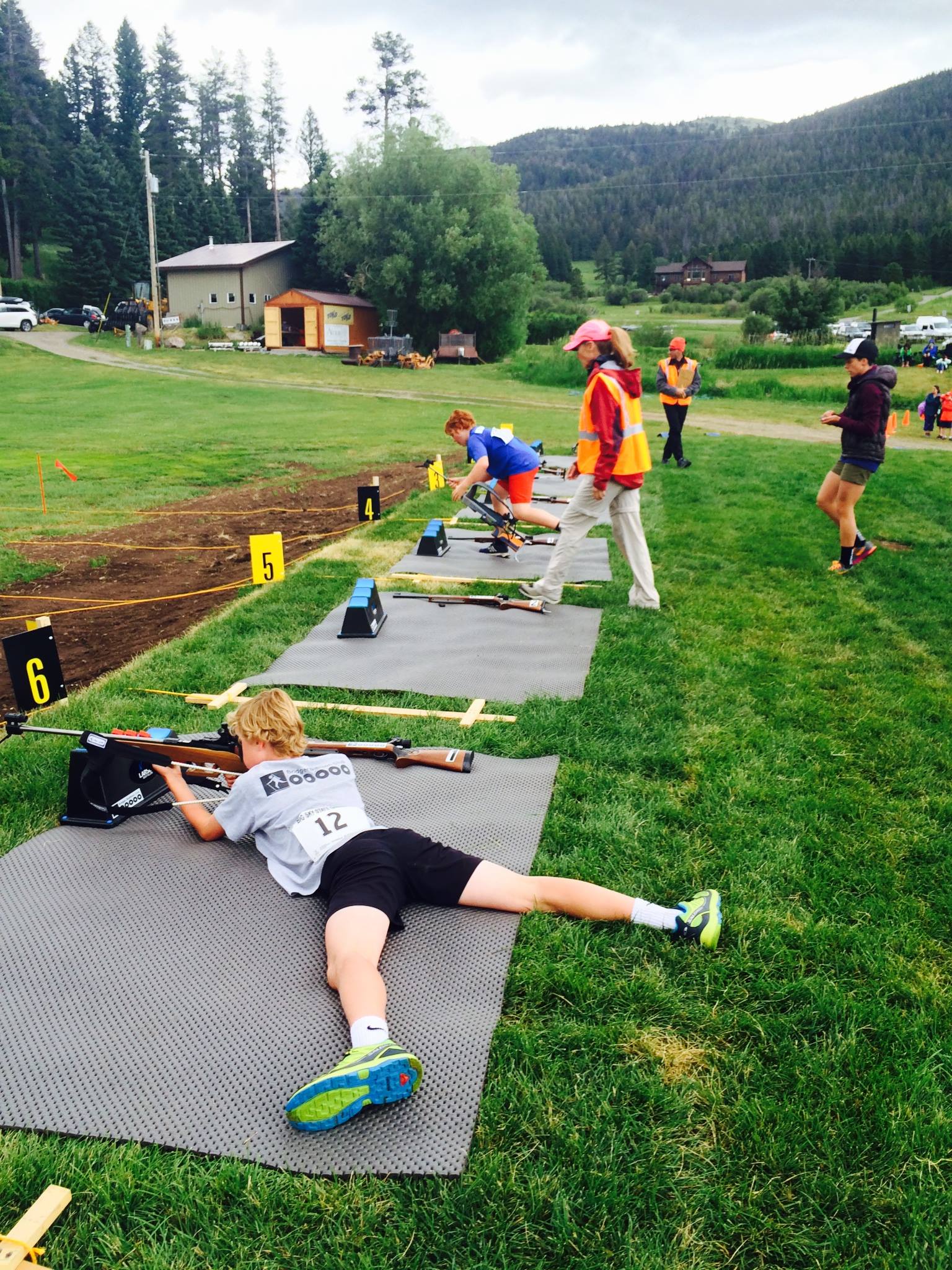
“There’s twelve really good points on the range,” Malcolm said. “When I was here starting to get into biathlon in 2010 or so, all we could use were two targets tucked up above Jane’s Gate, and you had to cross a giant gully to get to the targets and pull ropes.”
Although biathlon took a dive in popularity in the Big Sky mountain town in the 2000’s, it actually has a rich biathlon legacy. World Championships medalist Kari Swenson is a member of the board, along with fellow former U.S. biathletes Brian Wadsworth and Stuart Jennings. Other past top-level competitors like Clarissa Werre also help out with the club.
Those former biathletes, as well as other volunteers, were initially the whole coaching and support network for the club. This spring they began to think about hiring a coach, and Malcolm happened to contact them at the same time. Until this spring, she said, she had been so buried in school that while she always meant to help out with the club it just didn’t happen.
“I actually reached out to them this spring when I realized that I would be graduating in May instead of August,” she explained. “I was wondering if they wanted a coach. I think I was hired on the spot, which was pretty fun. I sat down with a couple of their board members and all of a sudden we had a summer program.”
With the progress from two kids coming home from school three years ago and mentioning biathlon to their parents, through the club’s incorporation as a nonprofit in February 2014, to infrastructure improvements and the hiring of its first coach, the trajectory is looking impressive.
As she tries to put together a fall and winter program, Malcolm thinks that things will only get bigger.
“It’s a program that has monumental potential for growth,” she concluded.
Chelsea Little
Chelsea Little is FasterSkier's Editor-At-Large. A former racer at Ford Sayre, Dartmouth College and the Craftsbury Green Racing Project, she is a PhD candidate in aquatic ecology in the @Altermatt_lab at Eawag, the Swiss Federal Institute of Aquatic Science and Technology in Zurich, Switzerland. You can follow her on twitter @ChelskiLittle.



